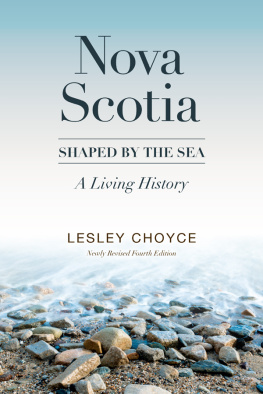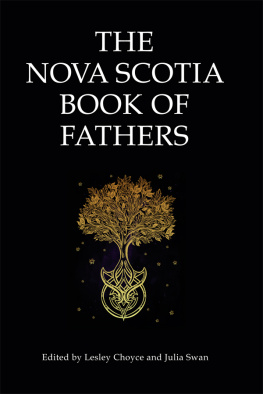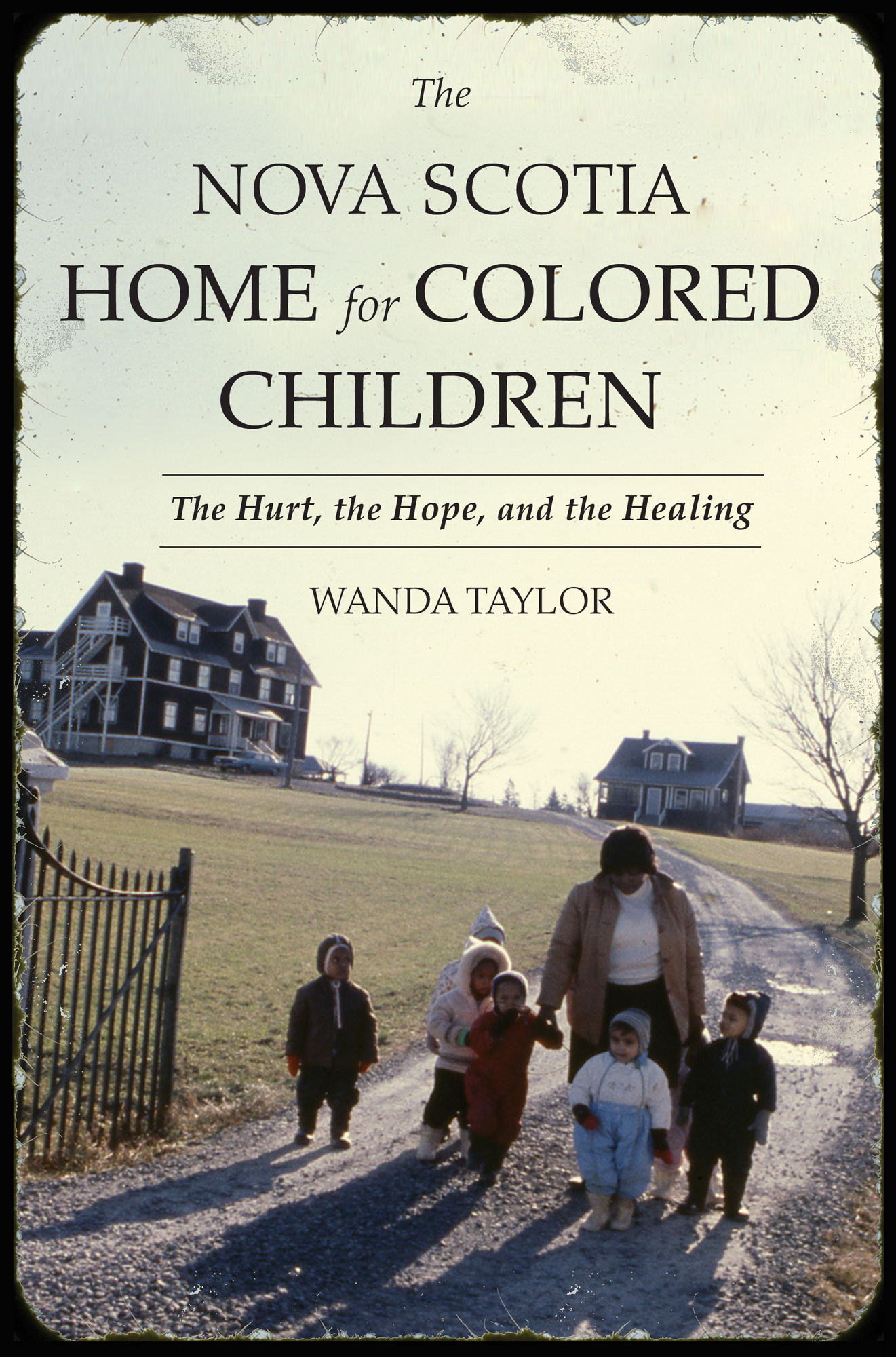Copyright 2015, Wanda Lauren Taylor
All rights reserved. No part of this book may be reproduced, stored in a retrieval system or transmitted in any form or by any means without the prior written permission from the publisher, or, in the case of photocopying or other reprographic copying, permission from Access Copyright, 1 Yonge Street, Suite 1900, Toronto, Ontario M5E 1E5.
Nimbus Publishing Limited
3731 Mackintosh St, Halifax, NS B3K 5A5
(902) 455-4286 nimbus.ca
Printed and bound in Canada
NB1155
Front and back cover photos: Nova Scotia Archives, Bob Brooks fonds, 1989-468
Cover design: Heather Bryan
Interior design: Jenn Embree
Substantive edit: Eva Hoare
Library and Archives Canada Cataloguing in Publication
Taylor, Wanda Lauren, author
The Nova Scotia Home for Colored Children : the hurt, the hope,
and the healing / Wanda Taylor.
Includes bibliographical references and index.
Issued in print and electronic formats.
ISBN 978-1-77108-358-4 (paperback).ISBN 978-1-77108-359-1 (html)
1. Nova Scotia Home for Colored ChildrenJuvenile literature. 2. Children, BlackAbuse ofNova ScotiaDartmouthJuvenile literature. 3. Children, BlackInstitutional careNova ScotiaDartmouthJuvenile literature. 4. Children, BlackEducationNova ScotiaDartmouthJuvenile literature. 5. OrphanagesNova ScotiaDartmouthJuvenile literature. I. Title.
HV6626.54.C3T39 2015 j362.76409716225 C2015-904318-2
C2015-904319-0
Nimbus Publishing acknowledges the financial support for its publishing activities from the Government of Canada through the Canada Book Fund (CBF) and the Canada Council for the Arts, and from the Province of Nova Scotia. We are pleased to work in partnership with the Province of Nova Scotia to develop and promote our creative industries for the benefit of all Nova Scotians.
This book is dedicated to those who have found the courage to rise above their circumstances.
Preface
Why I Wrote This Book
Some of the male staff would often withhold allowances from the girls unless we gave them a kiss on the lips, read Harriet Johnsons affidavit, recalling her experiences at the Nova Scotia Home for Colored Children. Formed out of a desperate need, the Home, as it was often called, was one of the first in North America to provide for orphaned and neglected Black children at a time when they were not permitted entry into white orphanages. Harriets affidavit is part of a class action lawsuit, officially settled in July 2014, which laid out, in explicit detail, the abuses suffered by many of the children who called this place home between 1921 and 1989. Whether the former residents experienced various types of abuses first-hand or were witness to them, it was all damaging. And yet for years, outsiders largely ignored the residents of the Home for Colored Children.
As a child protection social worker and former agent for the Provinces of Nova Scotia and Ontario, I was profoundly moved and genuinely interested in the developments surrounding the Home. As a child, I was fully aware of its symbolism and its importance to the Black community: there was no other institution like it in Canada. At the same time, I was also aware that some things were just not right at the Home.
But it was not always tainted by the dark clouds that overshadow it today. Some very compassionate and caring workers dedicated their time to the children who lived there. Certain notable community leaders invested vast resources and energy. Selfless board members championed its cause and fought to establish its legacy.
So, to go against the grain would be to disturb the dust. As a result, no one really wanted to be the first to speak out. But decades after its impressive beginnings, some former residents found the courage to verbalize their pain and demanded to be heard. Today, there is no question that many children in the Home suffered harm over decades. The question were left with is, how do the adult survivors find the courage to move on?
In 1994 Charles Saunders published Share and Care: The Story of the Nova Scotia Home for Colored Children. In it, he captured the initial dream of the Home and shone a spotlight on those trailblazers whose initiative and foresight brought that dream to life. Their admirable work on behalf of the children cannot be underestimated or forgotten. Unfortunately, the actions and poor decisions made by others, coupled with the flawed and discriminatory early twentieth-century system that left the Home to fend for itself, overshadowed the selfless work of those dedicated ones, those who did what they could with what little they had. Even today, there are former residents of the Home who say that being placed there saved their lives. There are some who called it the only home they knew; others say it was a living hell. No matter where the public rests in the debate as to whether or not bad things happened at the Home, its former residents are entitled to recount their individual stories and experiences. Saunders recalls that when he requested interviews with some of the children who lived at the Home, its staff selected four children to speak to him. Saunders remembers these children having generally good things to say about their experiences, but there was really no way to know if the stories were genuine, or if the children had been persuaded to provide such positive feedback.
Upon reflection, Saunders suggests that, had he been fully aware of the extent of those past abuses, he would have never written the book. Understandably he thought he was doing a good thing by trying to bring attention to what was deemed an important legacy. If he had been aware, I am sure his book would look very different from the one that currently exists. Up until former residents came forward publicly, and until the release of this book, Share and Care remained the only full, published reference about the Homes history.
The experiences recalled today by former residents ranges from good to horrific. Their stories lend some credibility to claims that favouritism existed among the staff, that special and loving treatment was given to select children while others were horribly neglected. Those who received special treatment may have well chosen to focus only on the good. Despite Saunderss efforts to capture the spirit and intent of the Homes legacy, the largest element missing in his depiction was the dark secret of abuse that lived within the Homes walls for years. However, like many others during that time, Saunders had only heard what were then called rumours. Many people from the community expressed shock and horror as the stories of abuse became public, surfacing in headlines on the front pages of prominent newspapers across the country.
After his book was published, Saunders did encounter one former resident who told the author about the abuses hed suffered and who said he wanted to write about it. Unfortunately, the two did not continue communications. Saunders later penned a note to the former resident in regard to Share and Care, telling him, I know this is not the book that you would have written.
Despite the fact that former residents publicly poured their hearts out to the media in the early 1990s, some in the Black community still insisted the abuse never happened. The class action suit may play a huge role in current interest in the story, but just as it was back then, there was skepticism among some in the Black community. Even within my own extended family, some of my distant relativesformer residents of the Homedeny ever experiencing or witnessing abuse while living there. I believe their opinions stem from three things: what they regard as abuse may be different from the actual definition of abuse; they may feel embarrassment and shame in disclosing that they were sexually or physically abused; and finally, a few may genuinely have had experiences that did not involve serious abuse.









